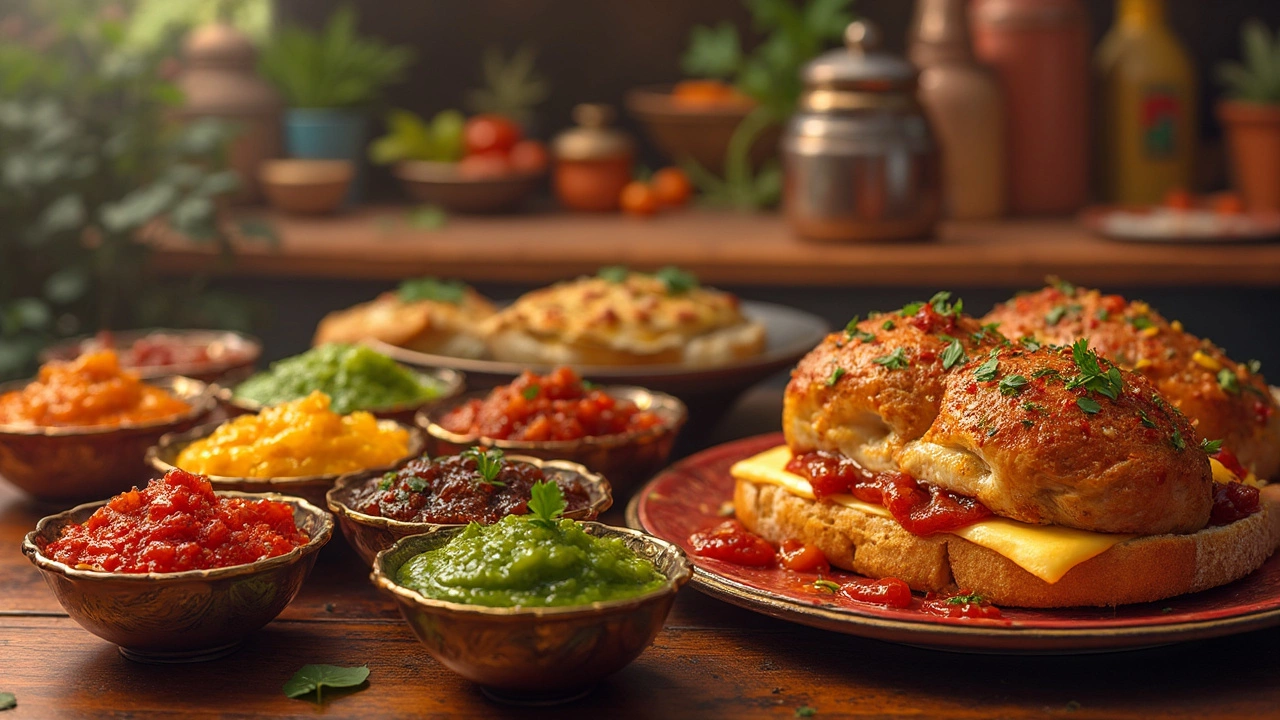British Chutney: A Flavorful Bridge Between India and the UK
When working with British chutney, a tangy, sweet‑savory preserve that blends fruit, vinegar, and spices, popular in the UK since the colonial era. Also known as British style chutney, it offers a unique balance of sweet fruit, sharp vinegar, and aromatic spices that makes it a staple at tea time and holiday tables.
At its core, chutney, the broader Indian condiment category provides the template: fruit or veg, acid, sugar, and spice. British chutney borrows that template but leans heavier on marmalade‑style fruit (often apples, mangoes, or quinces) and a milder spice mix that includes mustard seed, ginger, and cloves. This shift reflects Victorian taste for candied fruit and the British pantry’s abundance of vinegar and sugar.
One frequent question is how long a jar will stay good. shelf life, the period a preserved food remains safe and flavorful of homemade British chutney depends on acidity, sugar level, and storage method. A well‑sealed jar stored in a cool, dark place can last three to six months; once opened, the fridge is best, cutting the window to about a month. Sterilizing jars, using proper vinegar ratios, and keeping lids airtight are the three pillars that stop spoilage.
Temperature also changes the experience. serving temperature, the condition of a food when it’s presented can swing the flavor profile from bright and sharp to mellow and buttery. Serve British chutney chilled with cheese for a crisp bite, or let it sit at room temperature for a few minutes to let the fruit oils emerge. The heat softens the vinegar bite, making it a perfect companion to grilled meats.
Many cooks mix up chutney with relish, a coarser, less sweet condiment often made with chopped veggies and minimal sugar. The key distinction lies in texture and sweetness: chutney is smoother, more jam‑like, and leans sweet‑sour; relish stays chunky, focuses on fresh crunch, and usually skips the heavy sugar load. Knowing this difference helps you choose the right sidekick for a roast or a sandwich.
If you’re looking to master British chutney, keep reading. The classic preparation starts with simmering fruit, vinegar, and sugar until the mixture thickens. Adding spices early lets their flavors meld, while a late‑stage splash of fresh lemon juice can brighten the final product. For a modern twist, try swapping half the sugar for jaggery or adding a pinch of smoked paprika for depth.
Why British Chutney Still Matters
Beyond nostalgia, British chutney fits today’s pantry‑friendly cooking. It offers a ready‑made sweet‑sour base for marinades, glazes, and even salad dressings. Its long shelf life means you can prep a big batch in winter and enjoy it all year. Pair it with a classic Ploughman’s lunch, stir it into a pan‑seared pork chop glaze, or dollop it onto a veggie burger for an unexpected punch.
The articles below dig deeper into each of these angles: how to gauge the perfect serving temperature, the science behind extending shelf life, and a side‑by‑side look at chutney versus relish. Whether you’re a beginner or a seasoned jam‑maker, the collection gives you practical steps and tasty ideas to keep British chutney on your table.

How Do You Eat British Chutney?
British chutney, with its sweet and tangy flavors, is a versatile accompaniment that can transform everyday meals into something exciting. From adding a zing to a simple cheese sandwich to complementing a roasted chicken, knowing how to use chutney can elevate your culinary game. This article dives into practical ways to incorporate chutney into your meals, interesting factoids about this beloved condiment, and helpful tips for new chutney enthusiasts. By understanding how to best pair and use chutney, mealtime becomes more flavorful and enjoyable.